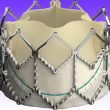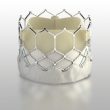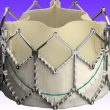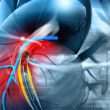Transcatheter aortic valve replacement (TAVR) results durable at 5 years to treat failed surgical bioprosthetic valves and at one year to treat valves percutaneously. Regardless the type of the failed valve, the solution is TAVR. The 5 year follow up of the PARTNER 2 valve-in-valve (ViV) showed that TAVR as treatment for failed surgical bioprosthetic...
Size Does Matter for Long Term ViV
The size of the original bioprosthetic valve impacts long term mortality, as does the type of bioprosthetic valve used in percutaneous reinterventions. The number of patients with failed bioprosthesis is on the rise, mainly due to increased life expectancy. Valve-in-valve (ViV) transcatheter aortic valve replacement (TAVR) has become more and more common these days and...
The Most Read Articles of August in Interventional Cardiology
01- Myocardial Injury for COVID-19 Even in Young Patients with Mild Symptoms Most young COVID-19 patients not requiring hospitalization showed abnormal cardiac magnetic resonance imaging (CMR) beyond two months after diagnosis. Read more HERE 02- Rapid Drop of Antibodies in Mild COVID-19 patients A fast drop in COVID-19 antibodies in mild patients triggers the alarm...
Surgical Valve Replacement Might Soon Be History
Patients with dysfunctional biological prosthetic valves have better outcomes with TAVR vs. surgical reintervention, beyond surgical risk. This study outcomes might even call into question the age cutoff to consider a mechanical vs. a biological prosthesis at first surgery. This analysis recently published in JACC looked at the outcomes of both possible strategies to treat...
SAPIEN 3: Good Outcomes in Bicuspids
Courtesy of Dr. Carlos Fava. Bicuspid aortic valves are found in approximately 2% of patients and represent the most frequent cause of aortic stenosis in young adults requiring valve replacement. Though TAVR has advanced significantly, this entity has not yet been included in the different randomized studies. At present, we have data from different reports,...
Valve in Valve Presents Better Evolution than re-SARV
Courtesy of Dr. Carlos Fava. Surgical aortic valve replacement with bioprosthesis has proved its benefits, but it fails after 10 to 15 years. Transcatheter aortic valve replacement has been shown valid, especially in high risk patients, but we still have little information and no “head to head” studies to know what is best in this...
IVUS in Unprotected LMCA Angioplasty: Should We Change the Way We Use It?
Courtesy of Dr. Carlos Fava. Bifurcation lesions account for about 25% of all angioplasties and it is a challenge for which there is no single treatment strategy. Intravascular ultrasound (IVUS) has proven its usefulness, improving outcomes by reducing mortality in unprotected left main coronary artery (LMCA) angioplasty. A new strategy consists in conducting an IVUS after...
EuroPCR 2020 | Aortic Valve in Valve in the Long Term
The outcomes of this work are important to plan valve replacement with the largest possible prosthesis allowed by patient anatomy in the index procedure. As a worldwide trend, increasingly more patients are receiving bioprostheses, which have improved a lot but still tend to become deteriorated and require a valve-in-valve procedure if the patient is no...
In Search of the Optimal Depth for Self-Expandable Valves
Despite the use of the different imaging approaches to calculating implantation depth, optimal depth is reached only 30% of the time. Multiple imaging does not offer a uniform perspective and therefore influence reporting. Basically, we do not have a clear idea of what constitutes optimal depth on a case by case basis and, what is...









